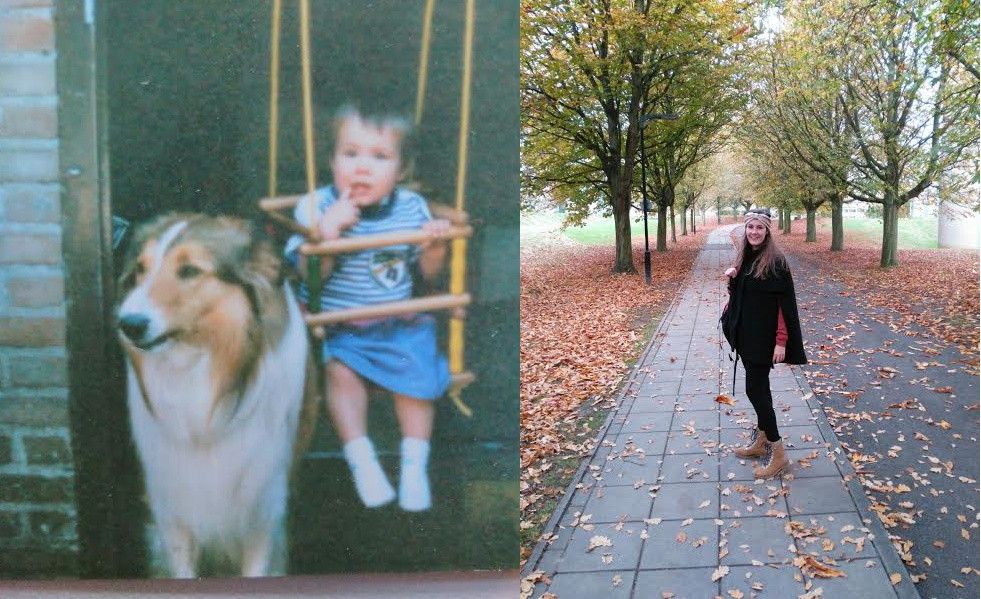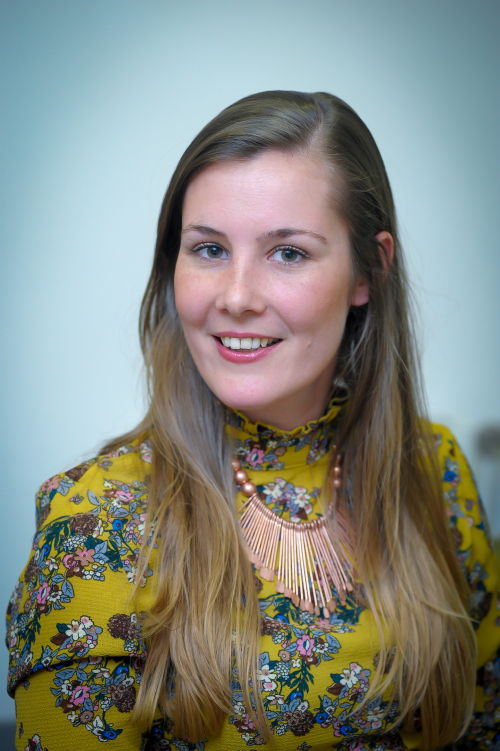Post-Doctoral Research Fellow
Research Interests
Word learning:
I study a variety of learning strategies that young children and adults use to acquire a sizeable lexicon. These strategies involve statistical learning mechanisms that help them to cope with visual input, and following social cues such as gestures to determine the correct referent for a novel word. Through experimental research with infants, preschoolers, and adults I aim to provide insight in how such language strategies may complement each other. Using implicit measures such as eye gaze, I investigate language learning even in younger infants. The goal of my research is to identify the (nonverbal) factors that facilitate word learning in children between ages 0-4, and use this knowledge to develop a better understanding of word learning mechanisms in general. Ultimately, I would like to develop interventions that can boost children's vocabulary development and language skills in the early years, preparing them for school entry, and minimising the risk of them falling behind at a later age.
Gesture:
I am interested in the iconic co-speech gestures that adults produce, and how these gestures can help children solve difficult tasks. Through experimental research, I investigate the mechanisms that underlie the beneficial effects of seeing iconic gestures on 3-4-year-old children's performance in memory- and language-related tasks. I also study pointing gestures in pre-verbal infants and preschool-aged children. For example, I investigate how infants use pointing and eye gaze to communicate their desire to an adult communication partner, and how infants' nonverbal behaviour may reveal what they know about their communication partner's knowledge states. In the preschool years, I look at how children produce pointing gestures in two-alternative forced choice word learning tasks and what these gestures can tell us about the strategy that children employ to solve the task, and how confident they are about their answers.
Evolution of communication:
I am currently working on an ESRC-funded project called "the role of gesture in language development and evolution". One of the most fascinating questions I often think about is how human communication evolved? Language is a uniquely human communication system which has not evolved in any to other species. However, language is just one part of the story; we also communicate nonverbally using body language and gesture. Remarkably, our closest evolutionary relatives, great apes, gesture flexibly too despite not having a language system. I believe that gesture plays a significant role in the story of how human communication developed and evolved over time. In my future research, I would like to further investigate this topic by analyzing the gestural communication system of humans and chimpanzees. By systematically comparing the gestures of humans and great apes I aim to better understand its role in communication development and evolution. If you are interested in reading more about this topic, I have published a blog post on the iCog website.
Curriculum Vitae
Read more about me in my CV, LinkedIn page, or go to my Google Scholar page.
Publications in peer-reviewed scientific journals
Aussems, S,, & Kita, S.(in press). Seeing iconic gesture promotes first- and second-order verb generalization in preschoolers. Child Development.
Aussems, S. (in press). How seeing iconic gestures facilitates action event memory and verb learning in 3-year-old children (Dissertation Notice). Language Acquisition. doi: 10.1080/10489223.2019.1624759
Aussems, S., & Vogt., P. (in press). Adults use distributional statistics for word learning in a conservative way. IEEE Transactions on Cognitive and Developmental Systems. doi: 10.1109/TCDS.2018.2870161 (won best post-doctoral paper award 2019 from the Faculty of Science at the University of Warwick).
Aussems, S., & Kita, S. (2018). Seeing iconic gestures with action events facilitates children's memory of these events. Child Development. doi: 10.1111/cdev.12988 (won best student paper award from the Faculty of Science at the University of Warwick)
Aussems, S., Kwok, N., & Kita, S. (2017). GestuRe and ACtion Exemplar (GRACE) Video Database: Stimuli for Research on Manners of Human Locomotion and Iconic Gestures. Behavior Research Methods, 50(3), 1270-1284. doi: 10.3758/s13428-017-0942-2
Vogt, P., Mastin, J.D., & Aussems, S. (2015). Early Vocabulary Development in Rural and Urban Mozambique. Child Development Research, vol. 2015, Article ID 189195, 15 pages. doi:10.1155/2015/189195.
Publications in peer-reviewed conference proceedings
Aussems, S., Mumford, K. H., & Kita, S. (2017). Seeing Iconic Gestures Helps 3-Year-Olds Link Multiple Exemplars for Verb Learning [Abstract]. Talk presented at the International Conference on Gesture and Multimodality (iGesto'17), University of Porto, Portugal.
Aussems, S., & Kita, S. (2016). How iconic hand gestures can change children's memory representation of action events [Abstract]. Poster presented at the 7th conference of the International Society of Gesture Studies (ISGS7), Paris, France.![]()
Aussems, S., Chu, M., Kita, S., & van Zaanen, M. (2015). Applying Pattern-based Classification to Sequences of Gestures. In Noelle, D. C., Dale, R., Warlaumont, A. S., Yoshimi, J., Matlock, T., Jennings, C. D., & Maglio, P. P. (Eds.), Proceedings of the 37th Annual Meeting of the Cognitive Science Society (pp. 124-129). Austin, TX: Cognitive Science Society.![]()
Aussems, S., & Vogt, P. (2015). Adults Track Multiple Hypotheses Simultaneously during Word Learning. In Noelle, D. C., Dale, R., Warlaumont, A. S., Yoshimi, J., Matlock, T., Jennings, C. D., & Maglio, P. P. (Eds.), Proceedings of the 37th Annual Meeting of the Cognitive Science Society (pp. 118-123). Austin, TX: Cognitive Science Society.
van Zaanen, M., van Huyssteen, G., Aussems, S., Emmery, C., & Eiselen, R. (2014). The development of Dutch and Afrikaans language resources for compound boundary analysis. In N. Calzolari et al. (Eds.), Proceedings of the Ninth International Conference on Language Resources and Evaluation (pp. 1056-1062). Reykjavik, Iceland.
Aussems, S., & Vogt, P. (2013). Exploring cross-situational learning and mutual exclusivity [Abstract]. In M. Knauff, M. Pauen, N. Sebanz, & I. Wachsmuth (Eds.), Proceedings of the 35th Annual Conference of the Cognitive Science Society (p. 3874). Austin, TX: Cognitive Science Society.![]()
Aussems, S., Goris, B., Lichtenberg, V., van Noord, N., Smetsers, R., & van Zaanen, M. (2013). Unsupervised identification of compounds. In Proceedings of the 22nd Annual Belgian-Dutch Conference on Machine Learning (pp. 18-25). Nijmegen, The Netherlands.
Aussems, S., Bruys, S., Goris, B., Lichtenberg, V., van Noord, N., Smetsers, R., & van Zaanen, M. (2013). Automatically identifying compounds. In Book of abstracts of the 23rd meeting of Computational Linguistics in the Netherlands (p.10). Enschede, The Netherlands.
Manuscripts under review at peer-reviewed scientific journals
Aussems, S., Mumford, K., & Kita, S. (n.d.). Seeing iconic gesture helps 3-year-olds use pre-exposure to unlabeled action exemplars for verb learning. Manuscript submitted for publication.
Manuscripts in preparation
Aussems, S., Archer, S., & Kita, S. A coding manual for infants’ communicative nonverbal behaviours during looking time experiments.
Aussems, S., & Kita, S. What 13-16-month-old infants’ communicative nonverbal behaviours can tell us about sound symbolism.
Aussems, S., & Kita, S. The effects of the presence and knowledgeability of adult communication partners on 8-14-month-old infants’ pointing to request objects.
Aussems, S., & Kita, S. How iconicity in speech and gesture influences 14-17-month-old infants’ understanding of size concepts ‘big’ and ‘little’.
Zuniga, C., Krott, A., Kita, S., & Aussems, S. Attention to function as a word learning strategy.
Dissertation
Aussems, S. (2017). How seeing iconic gestures facilitates action event memory and verb learning in 3-year-old children. PhD Dissertation. University of Warwick, Coventry, UK. (won PhD Dissertation Award from the Faculty of Science at the University of Warwick)
Testimonial
Mrs. Rachel Gillett
"I am the Executive Headteacher of Kenilworth and Whitnash Nursery Schools, Co-lead of Warwickshire Teaching School Alliance and a National Leader of Education. Our Schools are innovative and active research is a key part of our work in developing appropriate experiences to fulfil our vision of effective early childhood education. We have been fortunate to work with Dr Suzanne Aussems, of the Department of Psychology at the University of Warwick on a number of occasions to support her research and extend our thinking.
Suzanne is extremely professional in her approach and thoughtful in her research choices. She provides clear ethical frameworks and communicates efficiently and accurately. Suzanne has completed research in both Schools, communicating with myself, my staff teams and the parents of the children involved to ensure the process is very well organised and understood. The children who participate enjoy their involvement because her research is well designed and implemented. As a result of her work staff have considered how language is offered and the value of intonation and expressiveness in addition to the gesticulation or body movements we may link to words and stories.
We very much hope to continue to link with Suzanne in any future research and are confident to endorse her professional approach and thoughtful, meaningful research."

Dr Suzanne Aussems
S dot Aussems dot 1 at warwick dot ac dot uk
+44 (0)24 7652 3096
Department of Psychology
University of Warwick
Coventry, CV4 7AL
United Kingdom

